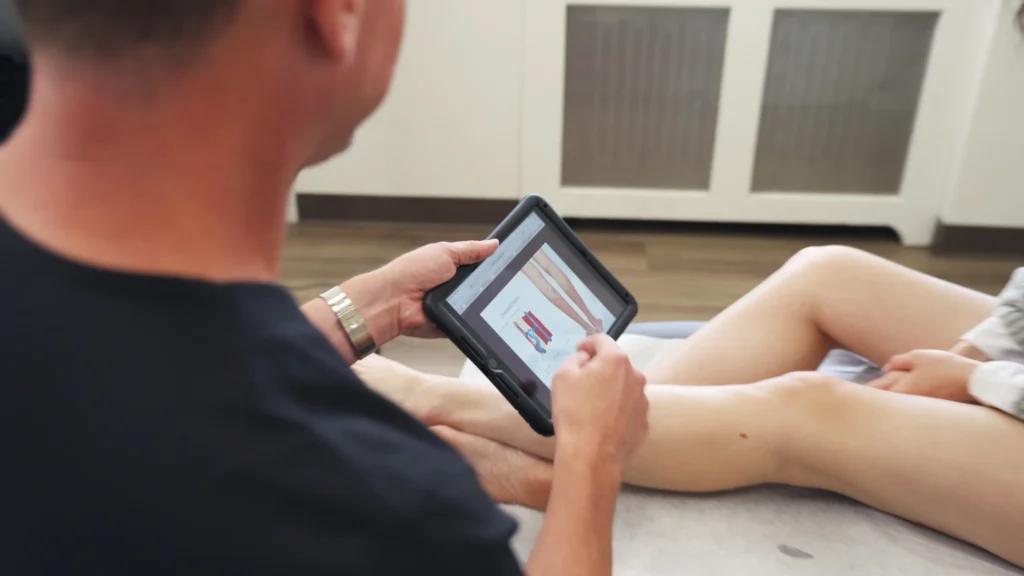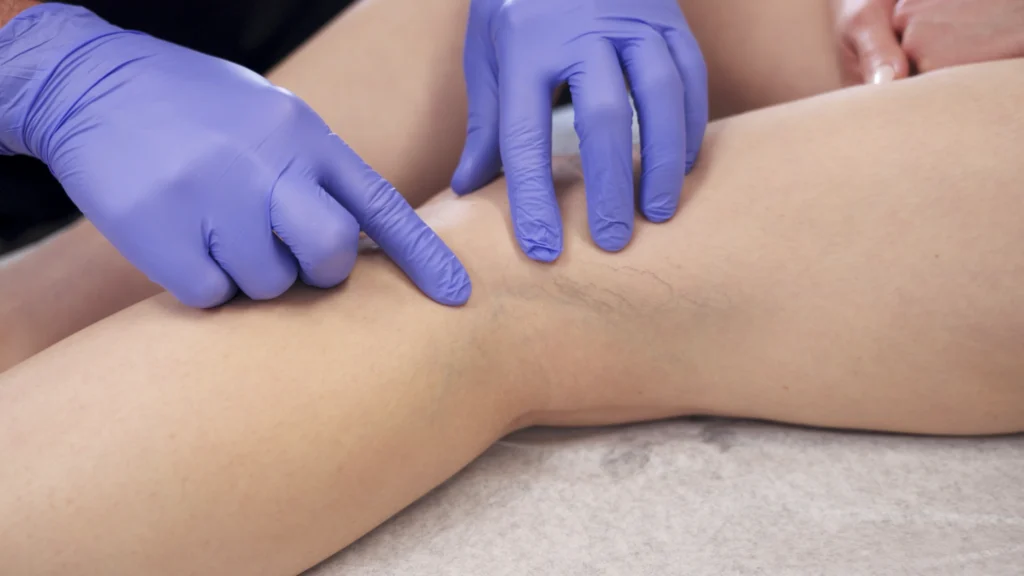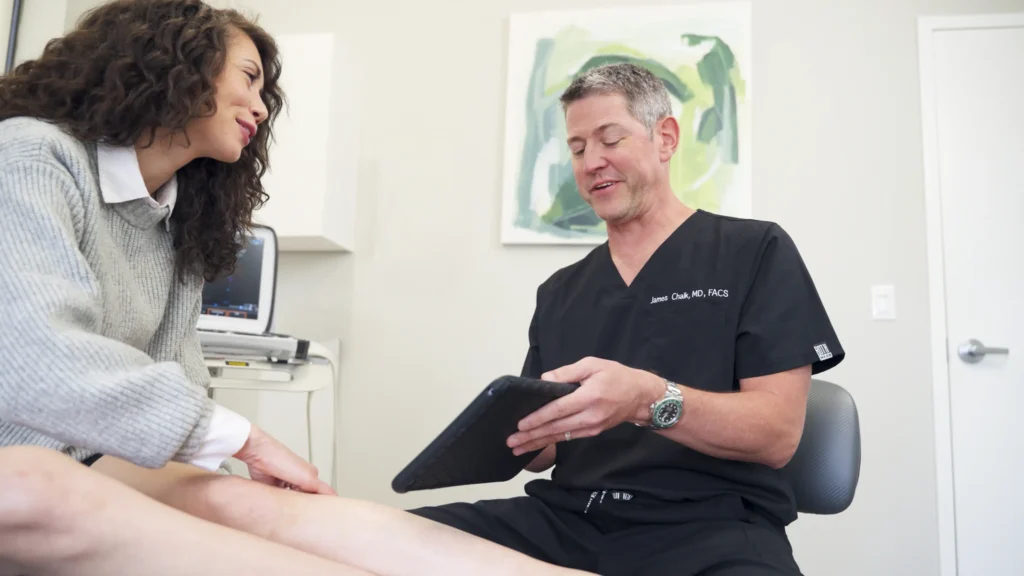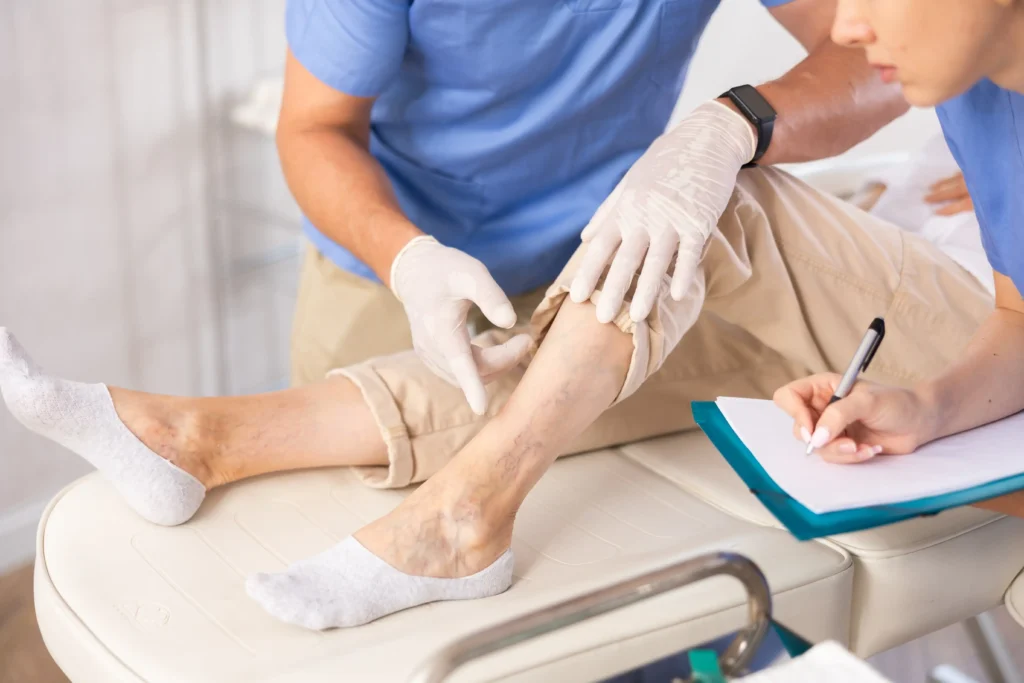How to Remove Spider Veins? (It’s Easier Than You’d Think)
Have you noticed tiny, web-like veins on your legs, ankles, or even your face? These spider veins might not cause pain, but they can still leave you feeling self-conscious about your skin. You may have tried home remedies or covered them up with makeup, but these solutions don’t address the root cause. The good news? Removing spider veins is not as complicated as you might think. With advancements in vein treatment, you can tackle spider veins safely and effectively, often with little to no downtime.
At Vein Treatment, we specialize in minimally invasive vein treatments to help you look and feel your best. We’ve designed a simple, step-by-step treatment approach to ensure you get the lasting results you want. In this guide, we walk you through every step of the process—from meeting with a vein specialist to understanding your minimally invasive vein treatment options. So, let’s get started on how to remove spider veins once and for all.
Step 1: Consult Vein Doctors
The first step toward spider vein removal is to consult with an experienced vein doctor. While spider veins may seem like a minor cosmetic issue, they often stem from underlying vein conditions, including chronic venous insufficiency. When you visit a vein treatment clinic like ours, a board-certified vein specialist will assess your symptoms and discuss your medical history to ensure you receive an accurate diagnosis. Our vein doctors, trained at top institutions like Harvard, will guide you in understanding the underlying causes of spider veins.
Step 2: Undergo Thorough Diagnostic Tests
Your vein doctor will perform diagnostic tests, typically involving duplex ultrasound. This test allows the specialist to look deeper into your venous structure, identifying if your spider veins are linked to a condition known as chronic venous insufficiency. When venous insufficiency is the root cause, the faulty vein valves prevent proper blood flow, causing blood to pool and lead to vein issues like spider veins and even varicose veins.
Recognizing that spider veins could indicate a larger problem is key to treating them effectively. Understanding what causes spider veins can help you make informed decisions about the treatments that will best suit your needs. By uncovering the root cause, we can create a treatment plan that not only removes visible veins but also prevents future complications.
Step 3: Receive a Personalized Treatment Plan
Once you’ve completed your diagnosis, your vein doctor will create a personalized treatment plan based on your unique needs. Because every patient is different, your vein specialist will consider various factors like the location and extent of your spider veins, your medical history, and any underlying venous issues. Our vein clinic offers only minimally invasive vein treatments tailored to treat both superficial veins and deeper venous issues. This customized plan aims to alleviate symptoms, enhance appearance, and prevent recurrence.
Step 4: Undergo Treatment for Venous Insufficiency, If Diagnosed
If your ultrasound reveals venous insufficiency, addressing this condition is essential to successfully treating your spider veins. Our vein specialists offer several effective vein treatments for venous insufficiency, each designed to close or remove faulty veins to restore proper blood flow. Here are the minimally invasive vein treatment options we provide:
- Endovenous Laser Ablation (EVLA): EVLA uses laser energy to close off the affected vein, rerouting blood to healthier veins. This procedure involves minimal discomfort and provides relief from symptoms like varicose vein pain, leg heaviness, and swelling.
- Radiofrequency Ablation (RFA): Similar to EVLA, RFA uses heat energy, delivered via radiofrequency, to seal off the problematic veins. This procedure is quick and offers long-lasting results with a short recovery time.
- VenaSeal: VenaSeal involves a specialized adhesive that closes off the diseased vein, which is then naturally absorbed by the body over time. This treatment doesn’t require the use of heat or tumescent anesthesia, making it a convenient option.
- ClariVein: ClariVein combines a mechanical catheter with a sclerosant solution to treat venous insufficiency, effectively closing off the faulty veins. This method is particularly effective for veins that might be challenging to treat with other options.
Step 5: Undergo Treatment for Spider Veins
Once underlying venous insufficiency is addressed, your vein doctor will focus on removing the visible spider veins. Treatments for spider veins target superficial veins and provide immediate cosmetic improvement. At Vein Treatment, we offer the following minimally invasive spider vein treatments:
- Sclerotherapy: Sclerotherapy is the gold standard for spider vein treatment. During the procedure, a solution is injected directly into the spider veins, causing them to close and eventually fade. Sclerotherapy is quick, minimally painful, and requires no downtime.
- Ambulatory Phlebectomy: For larger, superficial varicose veins that may appear alongside spider veins, ambulatory phlebectomy might be recommended. This procedure involves making tiny incisions to remove the problematic veins.
Step 6: Follow Aftercare Tips and Implement Lifestyle Changes
After your treatment, your vein specialist will provide detailed aftercare instructions to ensure optimal recovery and results. You may need to wear compression stockings for a few days to improve circulation and reduce swelling. Avoid prolonged sitting or standing for the first few weeks, and try to maintain an active lifestyle with gentle exercises like walking.
Additionally, implementing lifestyle changes can help prevent the recurrence of spider veins. Elevate your legs when sitting, avoid high heels, and incorporate calf-strengthening exercises into your routine to maintain healthy veins. By making these small adjustments, you can enjoy long-lasting results from your vein treatment.
FAQs
What causes spider veins?
What causes spider veins? Spider veins are typically caused by chronic venous insufficiency, a condition where faulty vein valves hinder blood flow, leading to pooling and vein dilation. Other factors include genetics, hormonal changes, obesity, and prolonged sitting or standing.
What is the varicose veins treatment cost?
The varicose veins treatment cost varies based on the type and extent of treatment needed. However, treatments for venous insufficiency are usually covered by insurance if deemed medically necessary. Cosmetic treatments like sclerotherapy may also be covered if venous insufficiency is diagnosed. Contact us to request insurance verification for more clarity.
What is venous insufficiency?
What is venous insufficiency? Venous insufficiency is a condition where veins have difficulty returning blood to the heart, often due to weakened or damaged valves. This condition can cause symptoms like leg heaviness, swelling, varicose veins, and spider veins.
Are vein treatments covered by insurance?
Yes, most vein treatments are covered by insurance if they’re deemed medically necessary. While spider veins are often viewed as a cosmetic issue, addressing the root cause—such as venous insufficiency—can qualify for coverage. At Vein Treatment, we offer insurance verification to help you understand your coverage options before beginning treatment.
Visit Your Nearest Vein Treatment Clinic
Removing spider veins has never been easier, thanks to advanced, minimally invasive treatment options available at our vein treatment clinics. With vein clinics in New York, Long Island, California, Maryland, and New Jersey, we’re here to help you achieve vein health and regain confidence. Don’t wait to address your vein concerns. Visit your nearest vein center and take the first step towards a spider vein-free life.







